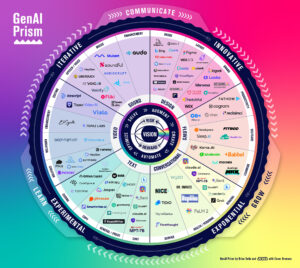
Social media changes everything. Marketing, sales, customer service, they’re no longer departments, engagement is now a way of business.
As the impact of social spreads through organizations, questions arise about the role social ultimately plays in customer service and overall customer experiences. For the past three years, good friend Brent Leary and the folks at Social Media Today have produced The Social Customer Engagement Index. It examines how companies are using social tools for customer service and, more importantly, how customers are responding.
What’s fascinating is that even today, I’m still humbled by how far we’ve come and also how far we need to go. At a high level, the Index uncovered that while intentions to improve customer engagement and relationships via social run high among executives, the reality is that businesses aren’t putting their investments where their aspirations are. The challenge for change agents and internal champions is about moving businesses from #lipservice to #customerservice.
SAP, Social Media Today, and the team at Pivot collaborated on a new infographic to visualize the latest index. Let’s take a look…
Engagement Ideals vs. Market Reality
The study found that 71% of businesses claim to use social media for customer service and 87.5% have realized a positive impact. Looking at these numbers would almost be enough to convince executives that they’re on the right path. But as customers become increasingly connected, the investments that businesses make, or the lack there of, in social customer service, are not keeping up with customer expectations.
Only a small percentage of all businesses surveyed have put their money where there intentions are with 7% investing over a quarter of a million dollars and 5% investing between $100,000 – $250,000.
Of all social service cases, most businesses in the survey (41.2%) handle just under 5% of what transpires in the social egosystem. And, only 17.5% handle 25% of the issues that surface is social networks. If you think about it, that’s a tremendous opportunity to shift negative experiences into positive outcomes. Peer-to-peer influence, not to mention social proof, sways impressions and decisions in either direction. As a business, making an investment in social customer service not only improves sentiment, but also how people perceive your brand. As Amazon’s Jeff Bezos famously said, “your brand is what other people say about you when you’re not in the room.”
Businesses do believe that social media and customer service is becoming increasingly integrated. In 2012, 45% of businesses compared to 36% in 2011 are setting out to align resources.
However, almost 40% address social issues on an ad-hoc basis without the support of governance or a formal process. And, only 16% actually review social profiles before engagement.
In social media, the customer is always right…right now. Certainly social media response times are critical in the moment. Of those businesses that participated in the study, 36% state that response times are as fast as an hour or less. Another 32.5% assert that a response will occur in less than four hours and 26% will try to get back to customers within a day.
If we look at the reasons why engagement is hampered however, some very interesting, and dare we say inefficient, reasons emerge.
41% need to find the answer.
34% need guidance on how best to answer a question or resolve a problem.
27% need to find the appropriate message to answer.
Becoming a social business isn’t dependent on whether or not some of your team uses social networks for marketing, sales, or service here and there. A social business is a way of business. It’s a philosophy. As such, the move toward customer-centricity is takes more than good intentions. It takes a culture of customer-centricity rooted in vision, employee empowerment, social technology, company-wide integration, and supporting processes.
It takes a pivot from #lipservice to #customer service.
The full Social Customer Engagement Index will be released by SAP at The Pivot Conference. Reserve a copy today.
Taking place on October 15th and 16th in NY, the Pivot Conference will sell out.
Use code SolisVIP to save 30%.
See you there!
Connect with me: Twitter | LinkedIn | Facebook | Google+










Why would you need to review someone’s profile before responding, that doesn’t make sense? Are they inferring that depending on the profile they would not respond? Also, I am surprised that lack of resources was not a top item for why there are delayed responses. I feel that if you have a formal team in place that is one of the biggest hurdles to overcome.
Because sometimes you need to tailor the response based on the customer’s identity and/or history — influencer/detractor/past issues etc.
Exactly…or to learn more about their state as an existing customer.
Thank you for sharing this insightful infographic, Brian. In particular, the “reasons why engagement is hampered” caught my eye. While I agree that that the reasons presented speak to inefficiency, I also think that a delayed response can sometimes be better, too.
As a conflict management specialist, I’ve observed how even an apology (to the customer) can be far more effective if delivered in an authentic and timely manner, and sometimes that timeliness means not “right now”. That does not negate the need for quick response, to at least acknowledge, the social issue at hand.
Small and medium-sized businesses must get scared when they see numbers for investing in social media that go from $50k-$250k. What do you (and Brent) see as a financially feasible social media strategy for non-enterprise companies, even startups? How would you allocate budget for a small but growing team?
They have nothing to be scared of — a lot of very large companies allocate less budget that that — contrary to popular belief. There is very little appetite at the C-level for funding social service in my experience.
“Of all social service cases, most businesses in the survey (41.2%) handle just under 5% of what transpires in the social egosystem.”
“egosystem” – was that a typo or intentional??
New to Inbound and Social, can you give me an example of using social for customer service. i own a lawn care company in Cleveland/Columbus Ohio. Sorry for my ignorance, but very curious!
I’m actually dealing with this same issue with my own congressional candidates. Both the Republican and Democrat candidates only seem to want to use social media for broadcasting, not with actual engagement with their constituents. (Disclosure: I did some volunteer social media consulting work for one of them.) There are notable exceptions, but too often these campaigns are run by traditionally-minded media strategists who won’t allow their own campaign workers to serve as brand ambassadors on social media; or much less, even let the candidate respond to posts on their own Facebook page. They don’t take advantage of video recording a town hall event and making them into bite-size snacks so people can remember their position on the issues, but they will run tons of negative video ads.
Thanks for sharing Brian! Curious though…out of the businesses surveyed, how many of those were small to medium to large businesses? Would love to see a survey that compares small businesses using social engagement tools and practices vs. larger companies. My guess is that small biz are adopting social a little quicker. Thoughts?
Hi Alex,
In the detailed analysis section of the report we do a breakdown where we look at companies with less than 50 employees and how they answered many of the questions. You’ll be able to download it next week.
Thanks!
Brent Leary
Thanks for the reply Brent! Looking forward to downloading it next week 🙂
Excellent blog. Right on point.
Thank you Allan…
Based on the way we are communicating now, there is no question social media is going to continue to grow in the customer service industry. Additionally, more traditional style companies are going to need to open up to these changes to continue to keep customers happy and engaged.
Absolutely Leah…
One of the biggest problems with social for customer service is ROI. Most social media teams are in the “marketing” department. They are responsible for bringing in revenue (ROI) or they’re going to be short-lived. I agree with you that they should be a MUCH more integrated part of the customer service team, as well. I don’t think social is just marketing, just branding, just advertising or just social customer service. I think it has to be “the whole company” in a sense.
Dispense of old fashioned notions of ROI for social and I’m sure you’ll find businesses that aren’t focused on social as marketing are doing better on social.
Social media shouldn’t be owned by one department. I always encourage small business owners to ensure their marketing, customer service, engineering and sales teams work together. The customer service team knows what customers are raving about (which is important information for the marketing and sales teams to know) and what customers are frustrated which (which is important for the engineering team to know about – as well as sales and marketing).
The marketing team knows when promotions are going out (which the customer service and sales team need to know so they can answer questions) and the engineering team knows when a bug is occurring or when a new tech push is going to be made (which is really important for customer service to know – as well as the marketing team so they don’t start a promotion during a buggy time).
All departments are so inter-connected today such that silos must no longer exist. This is why social CRMs are so important. Each department should be able to see how the other departments are interacting with customers through social media. Collaboration is really the key to success. That’s not just a saying, it’s the truth.
Many brands are not using social media to offer customer service. In my opinion, customer service on social media can be very effective but I also think that it is a diverse area in itself. As such, to avoid confusion, its probably best to create a dedicated social profile where a business can offer customer service and respond to enquiries and concerns. Mixing customer service within your general brand profile can create clutter and confusion.